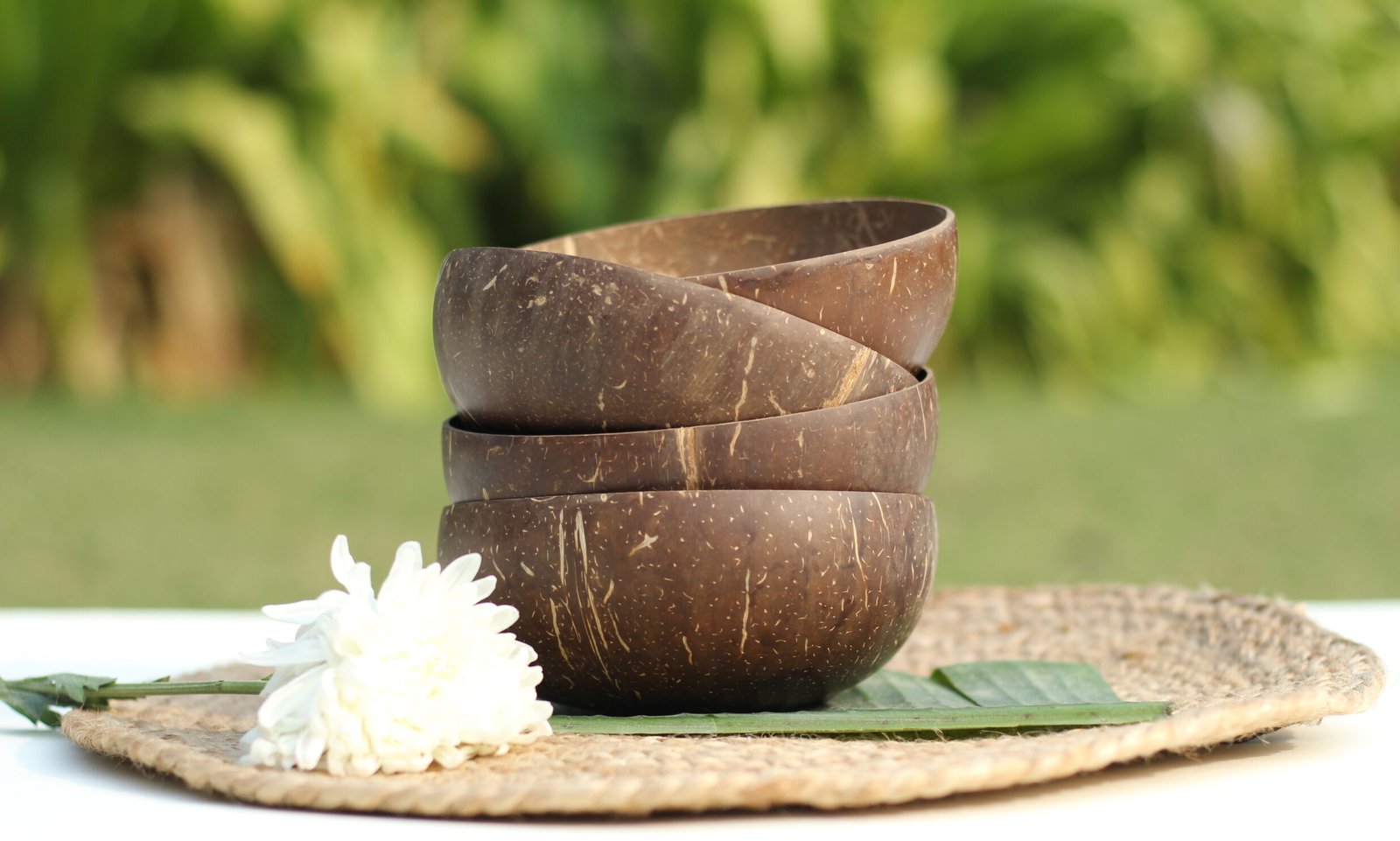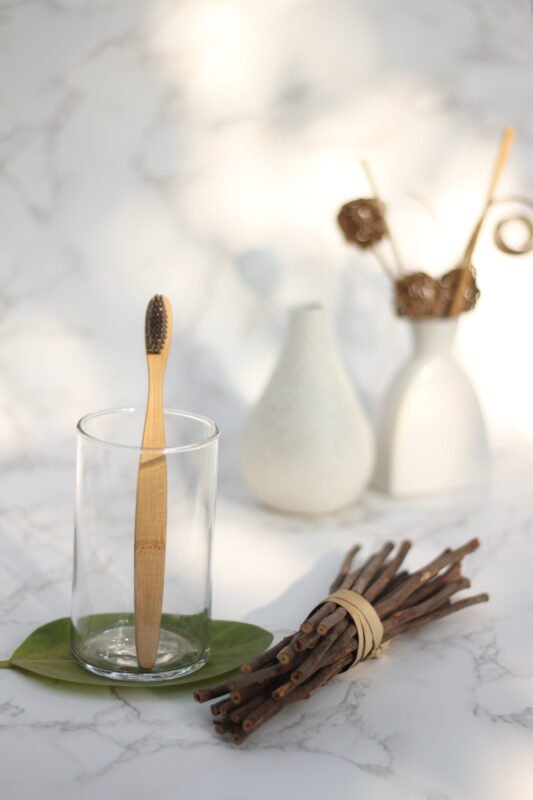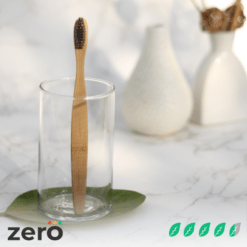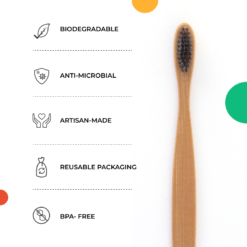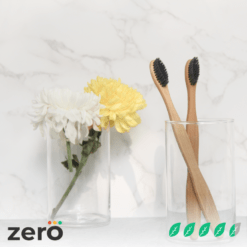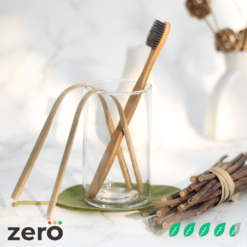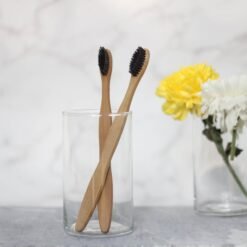Environment, Lifestyle, Sustainability
Bamboo Toothbrushes – Your First Step Towards a Sustainable Life
Over the past few years, there has been an increasing awareness amongst people when it comes to plastic pollution and its effects on marine life and landfills. Many of us are in the process of switching from a plastic-dependent lifestyle to a completely non-plastic and zero waste one.
Let’s talk about the first step towards making a sustainable lifestyle choice: TOOTHBRUSHES!
Although there are a number of options available for your dental health & hygiene, how many of them can guarantee healthy environmental impacts too?
Can we let you in a little secret? zudayogaeast.com Our favorite choice is our beloved giant panda’s favorite choice too! That’s right, folks! We’re talking BAMBOO.
Why should we choose Bamboo toothbrushes over any other alternatives?
Our Bambroosh(Bamboo+Tootbrush) is a manual toothbrush that has handles made out of bamboo and charcoal-infused recyclable nylon bristles which are BPA-free.
Our aim is to create ease in achieving a sustainable lifestyle with this environmentally-friendly switch from plastic to a bamboo toothbrush.
Here, we have compared a bamboo toothbrush with a plastic alternative using our rating system. You can read more about it here.
| Factors | (Logo) Bamboo | Plastic |
| 1. Raw Material | Natural + Nylon (Bristles) | Synthetic |
| 2. Manufacturing Emissions | Low | High |
| 3. Product Lifespan | 3 months | 3 months |
| 4. Biodegradability | <1 year | >450 years |
| 5. Packaging | Minimal | Not Minimal |
| BZ Eco-Rating | 4.5 | 1.5 |
BZ ECO-FACTORS RATING:
Our environmental rating is formulated by considering the following 5 factors:
Raw Material:
Our Bamboo Toothbrushes are rated 0.5, as the body of Bambroosh is made of bamboo (a natural, renewable plant), with bristles made of nylon. The plastic toothbrush is rated 0 as it is completely made of synthetic & non-renewable materials.
Manufacturing Emissions:
Manufacturing bamboo products results in lesser carbon emissions as compared to the process of making plastic from oils. Hence, bamboo is rated 1 while plastic is rated 0.
Lifespan:
Both the toothbrushes have a similar lifespan as dentists recommend replacing your toothbrushes within 3 months of usage. Hence, both are rated 1.
Biodegradability:
Bamboo toothbrushes, being an all-natural product, has an ease and a faster rate of biodegradability while plastic takes almost 150x more years. Hence, bamboo is rated 1 and plastic 0.
Packaging:
BZ follows minimal packaging practices, our toothbrushes are shipped in reusable cotton pouches made from recycled industrial waste from Katran Market, hence rated as 1. While a plastic toothbrush is rated as 0.5 since the packaging may or may not be eco-friendly and minimal depending on the manufacturers.
As you see, bamboo is clearly the winner here! 🙂
Let’s talk bamboo!
Bamboo is one of the most versatile plants on our planet that comes with its extraordinary set of qualities like;
- Easily replenishable
- Fast growth rate
- Compostable
- Biodegradable
ENVIRONMENTAL IMPACT OF THE PRODUCT:
1) Number of units wasted worldwide:
World’s population- 7.53 billion people ~ 29.4 billion toothbrushes each year.
A plastic toothbrush ~ 20g.
Only 9% of all the plastic in the world is recycled!
The whole of humanity produces 600 million kg of plastic toothbrush waste in only 365 days.
2) Packaging waste created:
Plastic is one of the most widely used materials when it comes to packaging.
It contributes to around 40% of packaging waste. A plastic bag has an average working lifespan of 15 minutes, after which it is discarded. Approximately, about 500 billion plastic bags are used worldwide.
Quick Usage Techniques:
Cleaning of Bamboo Toothbrushes:
Start with a ½ cup of water. Mix the two tablespoons of white vinegar and (optional) baking soda. Soak the head of the toothbrush for 20-30 minutes. Rinse and store properly.
Storage of Bamboo Toothbrushes:
Store the toothbrush in a clean, dry place to avoid any mold formation. After usage, you can keep it in sunlight for a while to completely dry it off and for it to get a soft and subtle sun-kissed look.
Disposal of Bamboo Toothbrushes:
You can reuse it to clean tough spots in the house.
Discarding technique:
Bristles: You have to remove the bristles before composting as they are made of nylon. The best way to remove the bristles is to pull them out with pliers. If unavailable, you may simply snap the head of the toothbrush off.
Wooden handle: The wooden body goes in the compost and the bristles to the recycle bin.
